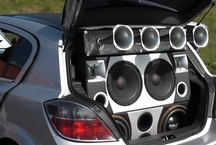Top 10 amplifiers in the car
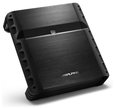




The capabilities of standard or self-installed head units (or, simply put, recorders) are quite limited, and first of all by the inexorable laws of physics: not even at nominal 12 volts, but real 14-14.5 V with the generator running at 4- The source will deliver an ohm load of no more than 52 W of DC electric power. And then how to "swing" a subwoofer or rear speakers? The amplifier cascade will have to be powered through a powerful voltage converter, and this is the size and heating (and the efficiency of amplifiers and pulse converters is not 100%) - you don’t put such a device into the torpedo. There is one more nuance: the closer the power delivered by the amplifying stage to the maximum, the greater the distortion in the signal. Therefore, listeners demanding to sound quality use amplifiers even at those capacities that, in theory, the head itself would provide: working on the “right” frequency response section, the amplifier will provide a minimum of distortion while having a margin to work out the volume peaks.
So in any more or less serious sound installation an amplifier is a must have thing. But which amplifier is better to choose from a variety of models presented in stores? Let's try to figure it out.
Rating the best amplifiers in the car
| Category | A place | Name | Rating | Price |
|---|---|---|---|---|
| The best single-channel car amplifiers | 1 | Audison SR 1Dk | 9.8 / 10 | 34 500 |
| 2 | Focal FPX 1.1000 | 9.7 / 10 | 30 890 | |
| 3 | Kicx AR 1.350 | 9.6 / 10 | 9 680 | |
| 4 | JBL GX-A3001 | 9.1 / 10 | 8 125 | |
| The best two-channel amplifiers in the car | 1 | Focal FPX 2.750 | 9.7 / 10 | 30 890 |
| 2 | Pioneer GM-A5702 | 9.5 / 10 | 8 230 | |
| 3 | Alpine PMX-T320 | 9.0 / 10 | 6 320 | |
| The best four-channel amplifiers in the car | 1 | Kicx QS 4.160M Black Edition | 9.8 / 10 | 11 890 |
| 2 | Infinity REF-704A | 9.6 / 10 | 9 990 | |
| 3 | Pioneer GM-D8604 | 9.0 / 10 | 9 990 |
The best single-channel car amplifiers
|
Audison SR 1Dk
34 500
Creating a powerful amplifier (and a dual-load load Audison gives up to 940 W!), Involuntarily think about the use of class D pulse circuits with their high efficiency, for the traditional "analog" circuits unattainable. But the sound quality here will require such tricks of circuit design that it will be difficult to make such an amplifier cheap. Of course, everything is relative, if you take Ground Zero amplifiers that show off EISA medals for comparison, but the price of Audison will seem excessive to many.
Nevertheless, its developers have achieved excellent for class D SOI 0.108 / 0.644% at 4 and 2 ohm load, respectively. The signal-to-noise ratio is also within the limits of permissible, if we are talking about sound quality, and we do not buy a subwoofer amplifier only for vibrating the back with the next “masterpieces” of electronic music. A convenient solution is that all the regulators are brought to the plane from above, therefore, after fixing the amplifier in the trunk will remain easily accessible. It is enough to remove the plastic protective cover to access the settings. I am glad that the possibility of a cascade connection through the linear inputs-outputs, and high-level inputs. Work is also provided with an external volume control. Main advantages:
Minuses:
|
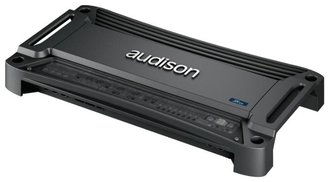 9.8 / 10
Rating
Reviews
Great amp, with really high quality and clear sound. He spent half a day licking the settings, but he was completely satisfied with the result. |
|
Focal FPX 1.1000
30 890
Designers from Saint-Étienne eat their bread for good reason - flaunting an even kilowatt (permissible single-load) amplifier Performance series manages in class D to demonstrate excellent sound quality - SOI 0.08%. True, the signal-to-noise ratio for it is only 76 dB, which immediately gives the nature of the “filling”.Nevertheless, the Sound Image Awards 2018 award is clearly not deserved for “beautiful eyes”.
The scheme of terminal cascades was originally made pavement, that is, one-coil “sub” can be easily connected to the outputs, hoping to get maximum power, not all single-channel ones can (they have a pair of outputs designed for strictly two-coil speakers or two subwoofers). The set of settings is classic: cut-off frequencies, sensitivity, bass boost, phase rotation. Connection - only "tulips" line inputs, and outputs are provided for the cascade of amplifiers and subwoofer rear. What is definitely attributable to the advantages of class D is the size and weight of the amplifier: it is much smaller, lighter and certainly does not turn into a “stove” in the long run at high power compared to the “pure analog” AB single-channel channels. . Main advantages:
Minuses:
|
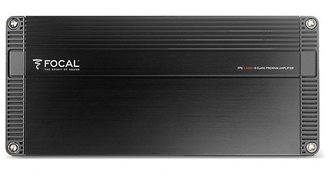 9.7 / 10
Rating
Reviews
I know already well with the Fokalov amplifiers, so I didn’t doubt the choice - the amplifier is of high quality and reliable, with good sound. |
|
Kicx AR 1.350
9 680
This amplifier works in the “fair” AB-class, so you shouldn’t worry about the sound quality: the non-linear distortion coefficient on a dual-volume load is only 0.029%. This result looks excellent against the backdrop of most modern single-channel, which are increasingly collected on the D-class circuits. Payback for sound quality - increased power consumption, efficiency in AB mode does not exceed 50%. And in the load "Kiks" is able to give up to 600 watts, if you use a two-speaker speaker, or 350 watts at 4 ohms. So, it is not worth saving money with the cross-section of the power supply wires, and the capacitor will not be superfluous to smooth out the drawdowns on the peaks.
The set of functions here is traditional for single-channel amplifiers, which are used with subwoofers: adjusting the input sensitivity, phase rotation in the range from 0 to 180 degrees, cut-off frequency of the low pass filter, raising the low frequency. It is possible to connect an external control panel. In connecting this amplifier is convenient in that it does not require the presence of a subwoofer output from the head unit - it has standard “tulips” of line inputs, summing the signals of both channels inside. Stop, and if I want to connect the amplifier to the rear, and the only pair of “tulips” is already taken? It's simple - there are not only linear inputs, but also linear outputs, so that you can connect another amplifier to the Kicx AR 1.350 in a chain without any tricks. Main advantages:
Minuses:
|
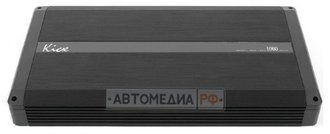 9.6 / 10
Rating
Reviews
A good amplifier, if you need a sound from the subwoofer, and not stupidly kilowatts of booming in the trunk. |
|
JBL GX-A3001
8 125
The GX-A3001 amplifier will be primarily interested in car owners with a station wagon, where a large open trunk volume does not require heavy-duty subwoofers to “penetrate” the sound into the passenger compartment, but the compact body can fit in regular luggage niches. Well, and if he does not fit anywhere, then let him remain in plain sight, the amplifier looks very attractive.
The power amplifier stage, operating in AB class, is 200 W for 4-ohm load or 300 W for 2-ohm load. The amplifier has a good signal-to-noise ratio, the benefit and most of the noise far beyond the frequency band, played out by subwoofer speakers. If your radio has no linear outputs - do not worry, a high level input is provided. This model has few settings - sensitivity, cut-off frequency and bass boost. In principle, for most cases, more is not necessary, but having at least a “reserve” phase regulator would not be superfluous. Main advantages:
Minuses:
|
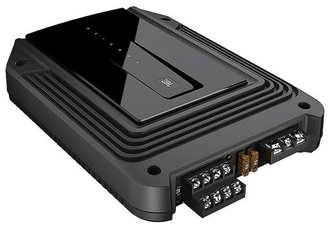 9.1 / 10
Rating
Reviews
I put in Honda DAB, power on a 12-inch saba enough.The sound is excellent, much better than the D-class. |
The best two-channel amplifiers in the car
|
Focal FPX 2.750
30 890
“Well, okay, class D amplifiers have climbed into the top of the best subwoofer single-channel channels, but here?” - most likely, it will sweep through in the head of audiophiles. However, the developers of a two-channel "seven hundred and fifty" from Saint-Étienne surpassed even the indicators achieved on a kilowatt single-channel, having achieved a CED of one hundredth (!) Percent. Weakly in a blind test say that this is a despicable "deshka"? That's the same thing.
750 W for this amplifier - the total power of two channels at a 2-ohm load. Both independent channels can be switched on in bridge mode, so the amplifier can be used for two front channels and one subwoofer (although why, if there is a specially “sharpened” FPX 1.1000 for the same money?). Accordingly, its controls are similar to the FPX 1.1000, with the exception of the added AXX switch - you can cut low frequencies if the system has a separate subwoofer amplifier, or, conversely, leave them only if this particular amplifier works on bridged connection ". If you simply connect acoustics here without a subwoofer, then the filter can be completely turned off and the whole frequency range transmitted to it without changes. Main advantages:
Minuses:
|
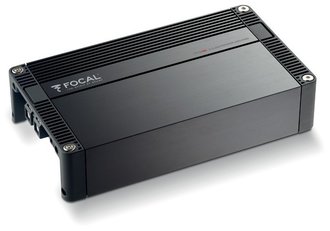 9.7 / 10
Rating
Reviews
Compared to the old “brick”, the sound is never worse, but less drawdown (the current “eats” is much less), there is no overheating in the heat, the dimensions are much smaller. |
|
Pioneer GM-A5702
8 230
Let us turn to more "popular" amplifiers in the car. Dual-channel Pioneer GM-A5702 is built on an analog AB class circuit, so with decent parameters it is noticeably cheaper than premium class D amplifiers. The nonlinear distortion factor fits into 0.05%, the load on two-channel speakers in dual channel mode is up to 240 W, on four-volume ones 150
As befits the “two-channel”, the operation in bridge mode on the subwoofer speaker is also foreseen: for this purpose a switchable low-pass filter is adjustable in the range from 40 to 500 Hz. Bass boost - without smooth tuning, three-way switch, gain control is smooth, but there is no phase control. Simply put, we have an amplifier for sufficiently powerful, but still amateur installations, when the owner of the car does not need an abundance of adjustments, but the ability to connect to the power outputs of the “head” (for example, if the head unit is left) is just the way. Note that nonlinear distortion is minimal in the area of average power - that is, exactly where the amplifier will be used. On 4-ohm speakers, distortion is expected to be less. The bass booster works in both single-channel and dual-channel operation, which is also a plus - you can raise the bottoms on the rear "pancakes", and without installing a subwoofer, if the quality of the speakers and shelf strength allow. However, the rise of the woofer in dual channel mode is less than in single-channel mode — up to 3 dB, and a 12-dB boost can be output to a subwoofer. Main advantages:
Minuses:
|
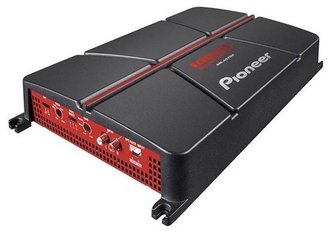 9.5 / 10
Rating
Reviews
It seems to be a simple amplifier, but it sounds serious, I liked it. Power reserve is good, even not very sensitive speakers will shake. |
|
Alpine PMX-T320
6 320
Further, in the ranking of the best - an extremely minimalist design amplifier, which is not particularly impressive with its power - in dual channel mode for widespread 4 ohm speakers, it will give only 50 W per channel. Little? But, believe me, the sound quality is better for him than many “heads” with the same declared output power.If you want to connect two-speaker speakers to a head unit that does not support operation with such resistance, then an amplifier will be required in any case, and the output power will be 75 watts per channel: without chasing sound pressure records and selecting speakers with good sensitivity, you can content with this value. In bridge mode, the amplifier gives up to 150 watts, while the speaker can only be connected to 4 ohms.
It is possible to connect the amplifier to the linear outputs and directly to the end of the radio - high level inputs are also provided. Adjustments, alas, a minimum: filter mode (LPF / HPF on / off), raising low frequencies with a three-position switch, sensitivity. So, the amplifier, whatever one may say, is primarily designed for users with low complexity and acoustics power who do not need extra “bells and whistles”, there is no desire to tinker with the settings, and the radio tape recorder, quite likely, is standard, without linear outputs. But it is quite inexpensive, it sounds good and is easy to connect - so why not? Main advantages:
Minuses:
|
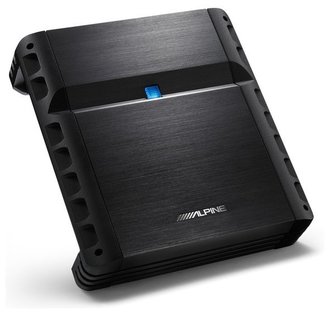 9.0 / 10
Rating
Reviews
Brand famous, sounds good. I connected to the staff, I do not want to change the radio tape recorder, but there are no linear outputs. The sound has become much better, but I still do not twist the volume all the way up, there is no need. |
The best four-channel amplifiers in the car
|
Kicx QS 4.160M Black Edition
11 890
The amplifier is designed to work in class AB with per channel or bridge connection. In the first case, it delivers up to 160 W to 4 ohms, in the second - up to 310. The manufacturer only allows connecting two-volume acoustics in a four-channel connection (320 W per channel).
The case of the amplifier is simple in appearance, even deliberately rude. Nevertheless, they have excellent characteristics in terms of distortion and channel separation. Input "tulips" - 4 pieces, and the inputs are divided into two groups, in each of which all the settings are set individually - the very thing for connecting the front and rear speakers to one amplifier. Any pair of channels can work in a bridge connection - here you have a 2.1 amplifier to the front and a subwoofer. The presence of line outputs will allow you to apply the amplifier to all four channels by connecting the subwoofer amplifier in a cascade. For each group of channels (A and B), the sensitivity can be adjusted, subsonic filter (0-50 Hz), there is an HPF, and a dual-mode one. In one embodiment, the cutoff frequency is regulated in the range of 50-500 Hz, in the other - from 500 Hz to 5 kHz. The same two modes also exist in the low-pass filter. For each group, you can optionally activate any of the filters - this is already useful when assembling component acoustics, where one amplification channel will answer for medium / high frequencies and the other for low frequencies. Main advantages:
Minuses:
|
 9.8 / 10
Rating
Reviews
A good car amplifier, I use it on the rear pancakes and a subwoofer, there is enough power with a margin, a lot of settings - you can unscrew everything for yourself. |
|
Infinity REF-704A
9 990
As far as Kicx is gray (that is black) and inconspicuous, so much does Infinity attract the eye, while doing without cheap kitsch. Of course, they do not measure up in power: here, with 4-ohm loudspeakers per channel, no more than 70 W are available (and you can actually get 100 W with a normalized SOI). But, if this power is enough for you, and high-quality sensitive acoustics are bought in the car, Infinity will open enough "chips".
One of them is the ability to connect directly to the power outputs of the radio, although there are no separate high-level inputs. We take the adapters from the terminal block to the “tulips” from the kit, insert them into the line inputs and simply flick the Input Level from Lo (line input) to Hi1 or Hi2 (high-level inputs with different sensitivity).In Hi2, the input impedance is further reduced in case the standard PG refuses to work, “not seeing” the load at the output of its amplifier. Simple and convenient, and a special thank you for having the included adapters. The input channels are hard-coded as front and rear, but in fact their set of settings is identical - you can separately adjust the sensitivity, cut-off frequency of the high-pass filter or the low-pass filter chosen arbitrarily. However, the filters have a fixed band - from 32 to 320 Hz, that is, there is no such convenience in working with component acoustics like that of Kicx. There are also summed outputs for connecting a subwoofer amplifier in a cascade. Another feature is the additional Halosonic line input, designed for the proprietary “Harman” active noise cancellation system: road noise is fed in antiphase here, and the speakers thereby muffle the sounds of the environment. Main advantages:
Minuses:
|
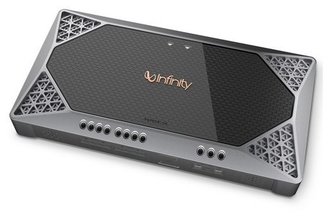 9.6 / 10
Rating
Reviews
Otpad sound, every nuance is drawn, the pressure and energy are felt. If you invest in Shumkov and acoustics - amp itself will show. |
|
Pioneer GM-D8604
9 990
And if "we would be cheaper and more powerful"? Then, waving a hand with the words “yes I will listen to MP3 anyway”, we’ll look towards class D amplifiers. GM-D8604 is capable of delivering up to 100 watts per channel with a 4-ohm speaker, and is capable of more (the stated power in this mode is 200 W), but the SOI curve to this mark sharply goes up, and the sound quality decreases significantly. For dvukhomnyh speakers the threshold of "audibility" - within 150 watts per channel.
The connection is simple and clear - the line-in connectors are located in the center, and the regulators of each pair are spaced to the edges, you will not confuse. Any pair of channels can work in a bridge (connection in 2.1 format), but note one feature that is not very noticeable due to illegible marking: the polarity on the block does not alternate as usual (plus or minus plus or minus), and is symmetrical (plus minus minus plus). The set of adjustments in each pair is minimal - gain, selection of the HPF / linear / low pass filter mode), filter cut-off band. You can also find the Input Select switch: in the 2CH position, only one pair of linear inputs is activated, and for each pair of channels the speaker is connected to the bridge, or the 2 + 1 circuit is being assembled, in 4CH mode, respectively, all inputs work. It is allowed to connect to line inputs as high level inputs, there are no separate operation mode switches. Main advantages:
Minuses:
|
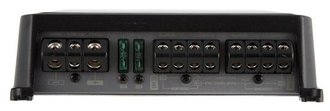 9.0 / 10
Rating
Reviews
The amp is small - just A4 sheet, but pulls the acoustics with a margin and is not heated. The sound is normal for me, I'm not complaining. |
Which amplifier in the car is better to choose?
Let's start with his appointment. If you need exactly subwoofer amplifier, then there are two options - either a single-channel amplifier or a two-channel amplifier in bridge connection. What is the difference? A two-channel amplifier is more universal - it will be possible, after removing a subwoofer, to switch to broadband acoustics, or, buying a more powerful “subwoofer”, to connect in cascade with a new subwoofer amplifier. That is why two-channel amplifiers provide for switching of filters, allowing either to cut off all medium and high frequencies when the amplifier is connected to a subwoofer, or to cut out the low-frequency if it works with front acoustics paired with the “subwoofer”, or leave the signal spectrum unchanged when the subwoofer There is no car, and the front speakers "play" in the entire frequency band.
If you want add power to both front and rear speakers, 4 channels will be needed.Moreover, by connecting two channels to the bridge, if you wish, you will get a 2.1 amplifier for a subwoofer and front speakers. Note that in component acoustics, the use of separate channels in different frequency bands is also often practiced; therefore, four-channel amplifiers can also be used only in front or rear acoustics. If you connect both the front and rear, and even the frequency bands in the installed acoustics are many ... In general, and 8 channels on car amplifiers do not surprise anyone.
Amplifier sound quality largely determined by the class of work of its terminal cascades. The most “pure” (and even with reservations) class A, so beloved by audiophiles, is considered, but the efficiency in it is minimal - and this means that the amplifier will load the battery and the generator, giving up most of the watts spent on warming up the trunk. Therefore, in automotive acoustics, if we even talk about “pure analogue”, then in the AB class, the sound of high-quality amplifiers hardly suffers, but the efficiency is already higher. As for the often referred to as “digital” class D amplifiers, their efficiency reaches 90%, they are compact, load the current sources as low as possible, and they do not get very hot. But to achieve good sound from them is more difficult and more expensive. Therefore, first of all they are relevant for subwoofers - this is where the power is maximum, but the narrow bandwidth will mask many of the flaws inherent in class D. The wideband amplifiers of class D with good sound quality at all frequencies are much more expensive than comparable “analog” sounds.
Naturally, pay attention to set of adjustments and inputs and outputs: if there is no line-out on the head unit, and you are not going to change it, then you definitely need an amplifier with high-level inputs. The presence of the amplifier "tulips" and the input and output allows you to easily assemble a cascade circuit - for example, if you need to give more power to the subwoofer, and only "raise" the wideband speakers, and already his - to the linear outputs of the "head". The presence of smooth adjustments to cut-off frequencies, bass boost and phase will allow you to adjust the sound as accurately as possible to your taste.
Talk about power amplifier It is impossible without separation from the distortion factor and the sensitivity of acoustics Sensitive speakers will provide the same volume at a lower power supplied by the amplifier, compared with the "blunt". Since with an increase in the output power of the amplifiers, the distortions inevitably grow, as a result, the sound on less sensitive speakers with the same amplifier will be worse. To maintain quality, you will have to use a more powerful amplifier that will work on a part of the SOI curve that is more comfortable for the ear. So it's better to buy more sensitive speakers and a simpler amplifier than trying to “shake” low-sensitivity extra watts.
And last, not by value, but only in order. No plastic "ears" mounts, especially on heavy-duty high-power amplifiers: no matter how many of them the author installed in client machines or brought in for repair, all had cracks or completely broken fastenings. Such an amplifier will sooner or later go "walking" along the trunk, especially in winter, when plastic becomes brittle.
Have a good shopping!
